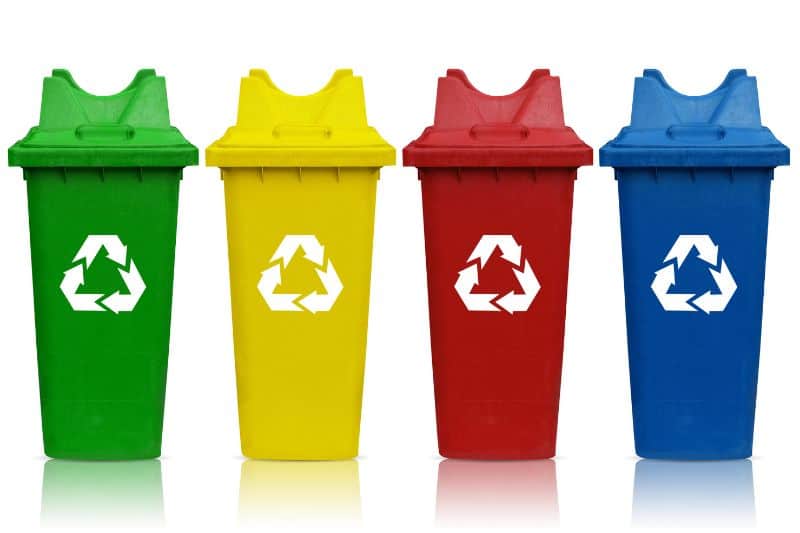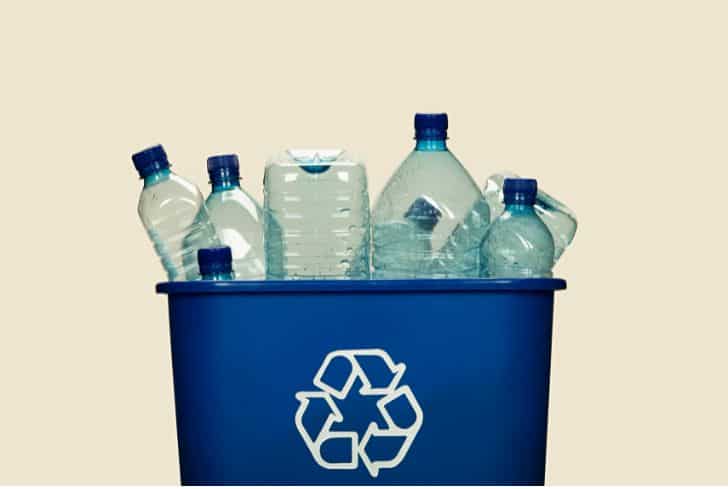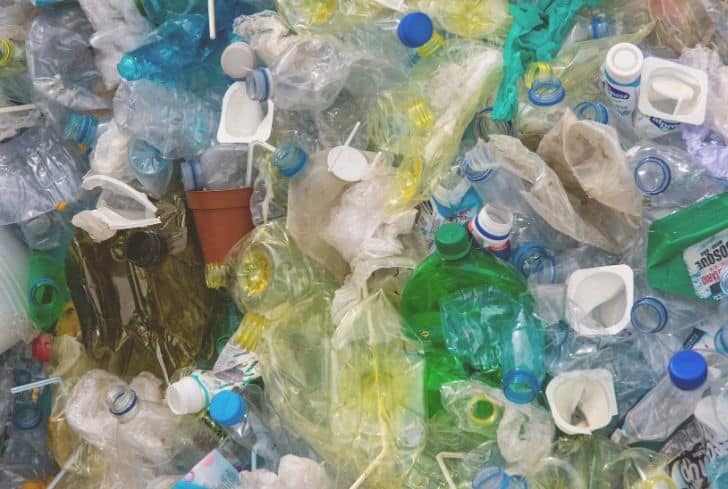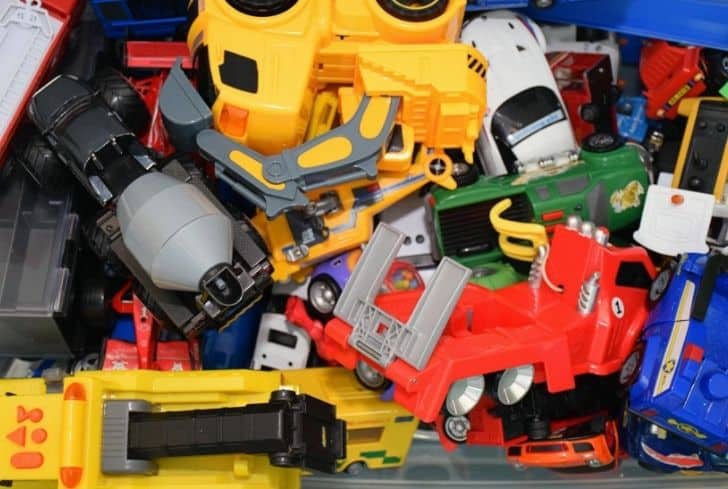Plastic is all around us. From soda bottles and grocery bags to your ID card and yogurt containers, we see and interact with this material day in and day out. However, most of the plastics come from petrochemicals.
Now, the amount of plastic around, regardless of the source, can have advantages and disadvantages. It can cause litter and pollution in the environment, which can put human beings and their environment in danger.
For this reason, plastic recycling is an essential procedure for managing plastic. It helps reduce the amount of new plastic material being introduced into the environment by using what’s already there.
But then — what does it mean to recycle plastic, and how is this process carried out?
If these are the questions racing through your mind, this article provides all the answers you need. Herein, we’ll show you how plastic is recycled and why recycling is good for humans and the environment.
But as usual, let’s get the basics out of the way first!
What Is Plastic Recycling, Anyway?
Plastic recycling, in the most straightforward terms, is gathering waste plastic and reconverting it into new and useful plastic products.
The world produces approximately 380 tons of plastic every year. Sadly, 50% of that is for single-use purposes and then dumped, with 10 million tons of the material finding its way into oceans yearly!
These striking stats necessitate the right measures to mitigate the effect this material is causing on our environment, and that’s where recycling comes in.
What are Common Recycled Plastics?
Guess what — most of the plastic we come across in our daily life is recyclable!
That’s right!
And just so you know, here are some of the most common plastic types you can recycle.
PET
PET (Polyethylene Terephthalate) is a popular thermoplastic. This material is thin and is perfect for producing low-pressure products. Clothing fibers and soft drink bottles are popular products made from PET.
PVC
PVC (Polyvinyl Chloride) is another thermoplastic. It is also one of the most commonly used plastic materials worldwide. PVC is handy in producing wires, pipes, bottles, and clings films.
HDPE
HDPE (High-Density Poly Ethylene)is also a thermoplastic. It is softer and more flexible compared to PVC. Examples of products that manufacturers use HDPE to produce are gallons and pipes.
LDPE
This material is the opposite of HDPE. LPDE (Low-Density Poly Ethylene) is used to make plastic bags. Sometimes, it is not easy to recycle this material. However, you can instead clean and reuse items made of this material for other purposes.
Plastic Materials Not Readily Recyclable
While most plastic items that we interact with are recyclable, we still have a few that you can’t recycle. Some of them are those from materials that would be uneconomical to recycle.
In some cases, the materials are recyclable, but the process turns out lengthy, costly, and sometimes just not adequate enough to effectively handle the type of material. Sometimes putting these materials in recycling equipment may cause the unit to stop or break.
Are you wondering what plastic type falls under this category? Here are some prime examples:
PS
PS is a polymer. Examples of products that come from this plastic include plastic cutlery and yogurt containers.
PP
PP is also a polymer. Manufacturers frequently use it to make plastic boxes, plastic furniture, and plastic jar lids. In most cases, recycling companies will reject it for recycling.
So, from all we have said, recycling plastic depends on the type of material. And plastic materials that you don’t recycle get destroyed or disposed of in landfills. Nevertheless, recycling is the best choice for plastic materials.
How is Plastic Recycled?
There are different types of plastics. This makes it impossible to recycle all plastics in the same way. Nonetheless, there are two methods of recycling plastic.
Traditional Recycling
This method is the most widespread recycling method. Another word for traditional recycling is mechanical recycling, and is suitable for recycling thermoplastic materials.
Traditional recycling involves melting plastics and processing them into new plastic products. After recyclers melt the material, they make them into new products through injection molding.
Advanced Recycling
Advanced recycling is a process through which the effect of chemicals breaks down plastic material.
This method can further be classified into three:
- Pyrolysis
- Chemical recycling
- Gasification.
Pyrolysis is a technique that involves recycling plastic waste into crude oil. Chemical recycling entails reducing a polymer into a monomer that can create new products. For example, manufacturers apply chemical recycling to make nylons.
On the other hand, gasification converts plastic to gas, which is then used to create energy.
One thing that’s worth noting is that both traditional and advanced recycling each has its own set of benefits. Nonetheless, the choice of recycling technique majorly depends on the facilities available and the anticipated end product.
But then again, despite the various recycling techniques, recycling generally follows common steps.
Step-by-Step Process of Plastic Recycling
The recycling of plastic is not as hard as manufacturing new plastic products. But it’s neither a walk in the park. It involves rigorous procedures and attention to detail. The processes may take months, and is general, applying to all type of plastic.
Here are six essential steps to recycle plastic materials.
Step 1: Collection of Waste Plastic
The first step to plastic recycling is gathering waste plastic products. While this process may seem easy, it is not entirely so.
At this stage, employees or volunteers collect waste plastic from homes, offices, and public places. Certain areas have collection sites where people can dispose of their plastics.

Some recyclers put recycling bins around public locations, residential areas, and industrial zones to ease collection. People can dump their plastic waste into these bins, which are separate from regular refuse bins. The waste is then regularly collected and transferred to recyclers to undergo the step 2 of recycling.
Many times, manually gathering plastics or dropping plastic waste into recycling bins may come with rewards. Recyclers retrieve all types of plastic at this stage and send them to a collecting yard.
Step 2: Sorting of Plastics into Categories
After collection, recyclers send the plastic products gathered to facilities where the items are separated according to the material type. Plastics differ in size, color, thickness, and use, and this process sorts them out based on these qualities.
Often, the plastic’s color and resin content are the basis by which recyclers sort plastics. Sorting is essential because it lets recyclers group materials with similar properties together for more effective and efficient recycling.
Step 3: Washing to Remove Impurities
After sorting plastics, recyclers wash the materials to remove impurities. These impurities in plastic include paper labels, dirt, and particles. Washing plastic also removes glue and additional chemicals that plastic materials may contain.
Washing removes impurities that may damage the new product or compromise it’s quality. Moreover, some of the contaminants in plastic products are not plastic, so they can’t be recycled alongside the material.
Step 4: Shredding and Resizing
This process comes immediately after washing plastics. It is impossible to recycle plastic in its already developed state. There is a need to resize the plastic material to a form that can be recycled. In this fourth process, materials will be put into shredders to reduce the plastic into fragments.
A plastic material cut into tiny pieces is more comfortable to process than in its original form. Shredding also makes it possible to reprocess plastic to other materials aside from plastic products. Resizing also makes it easier to identify elements like metal that recyclers failed to discover during washing.
Step 5: Identification and Separation of Plastics
After resizing has been completed, the next process is to identify and separate plastic materials. In this process, plastic particles undergo testing procedures.
The reason for testing plastics is to identify the class and quality of the plastic. The plastic materials are then separated based on their features for further processing.
There are several features tested in this process. One of these qualities is density. Recyclers place these plastic particles into a container of water to determine their density. The particles that end up sinking are less dense, while those that float are denser.
Another quality this process tests for is the air classification of plastic materials. Air classification determines the thickness of plastic. And to assess air classification, recyclers put plastic particles into a wind tunnel. Thicker and bigger plastic will stay at the bottom of the wind tunnel. The thinner ones will float.
This step also identifies other qualities like the color and melting point of plastic. Recyclers test samples of plastic materials to determine each material’s melting point and color. After identifying, they separate the plastic particles and send them for further processing.
Step 6: Compounding
Compounding is the final process in plastic recycling. This step is where recyclers transform plastic particles into materials that manufacturers can reproduce. Compounding involves smashing and melting plastic particles to create pellets. This process is also called extrusion.
Sometimes, recyclers move plastic to different areas where they can be recycled. The recyclers may move the materials to other plants because of the features in step five. A recycling company may not be able to process all the plastic types it identifies.
At the end of this stage, new plastic and non-plastic products originate from the pellets’ processing. This final process also consumes the most time and energy, and recyclers must fully understand the end product they aim to get and the entire process to manage time and energy efficiently.
And that’s it!
Benefits of Plastic Recycling

As see, recycling isn’t a very straightforward process. It calls for heavy investment on time, resources, and energy. But is the process really well worth it?
Well, it definitely is!
Here are some of the benefits:
- Plastic recycling reduces the amount of trash that ends up in the oceans.
- The process creates new jobs.
- Plastic recycling generates additional revenue for the government and private organizations.
- It reduces the release of carbon dioxide and harmful gases into the environment.
- It conserves the space used as landfills. It makes it possible to use those landfills for other purposes.
- Recycling saves petroleum that producers may use to make new plastics.
- The process lessens the energy that manufacturers consume in creating new products.
- Plastic recycling prevents global warming.
- It reduces the emergence of all forms of pollution.
- It provides income for volunteers who collect plastic waste.
- The process helps reduce activities like deforestation that happen when making new plastic.
- Encourages a sustainable lifestyle among people
Conclusion
Plastics serve lots of purposes in our daily life. This article has explained plastic recycling and the benefits the world can gain if we all embrace the practice. So, when next you empty a plastic bottle, don’t just throw it away. Be sure to dispose of plastic in a way that makes it possible for it to get recycled.
References:







